Osteochondrosis-The spinal collector, a characteristic characteristic of which is the degenerative dystrophic lesion of the intervertebral discs, and then the spinal tissues themselves. The main sign of osteochondrosis is neck or back pain. Among other symptoms, muscle atrophy, impaired sensitivity, disorders of internal organs are distinguished. Depending on the location of the pathological process, osteochondrosis of the cervix, chest and lumbar and lumbar are distinguished. If this disease and its treatment do not pay the necessary attention, the process of damage to the spine will be irreversible. In English literature, the term "osteochondrosis" means such a group of diseases of the musculoskeletal system as osteochondropathy. The main factor or cause that leads to the development of osteochondrosis is an uneven distribution of spinal load, which occurs when wearing in one hand or shoulder of weights (eg bags, backpack), long sitting in the wrong posture, night rest of an uneven mattress or pillow. Additional factors can also be a sedentary lifestyle, obesity, injuries and flat feet. All of the above situations over the years lead to frequent pain in the cervical, chest or sacral spine. According to statistics, osteochondrosis occurs from 40 to 90% of the world population, mainly at the age of 30-35 years. In adverse conditions, this disease develops in adolescence people, which most often contributes to wearing a heavy uncomfortable backpack, especially on one shoulder, uncomfortable shoes and injuries. The development of osteochondrosis occurs in 4 selected stages (grade): Osteochondrosis in the first stage.It is characterized by the onset of the pathological process in the polyposomal nucleus of the intervertebral disc - its dehydration (dehydration) occurs, and later the height of the disc decreases. At the same time, cracks in the fibrous ring begin to appear. At this stage, the patient usually does not feel any changes. The discomfort can be manifested with an unusual position for a person or an active exercise. Osteochondrosis 2 stages.With the decrease in the height of the discs, the distance between the adjacent vertebrae also decreases, and the vertebrate animals and the ligaments begin to sow slightly. This process leads to the ultravity of two adjacent vertebrae, which can lead to their slipping and/or displacement. A spondylolist is formed. Due to the displaced vertebrae, the patient experiences real discomfort and sometimes pain in the pathology. Osteochondrosis 3 stages.It is characterized by the formation of prolays and convexity of discs, sometimes subluxation and arthrosis are found in the intervertebral joints. The patient may feel firm in some movements, feeling numbness in the limbs, sometimes numbness occurs. In the 3rd degree of osteochondrosis, back pain, neck and coccyx, depending on the location of the disease, there is already. Osteochondrosis 4 stages.The body tries to correct the excessive mobility of the vertebrae as well as to normalize the functioning of the spine. At the point of binding of the vertebrae to pathology, bone neoplasms grow to each of them - osteophytes, which, when formed in an unnecessary place, can cause the microtraum to a nerve spine and sometimes adjacent vertebrae. For discs and joints, the processes of fibrous ankylosis can begin. The motor segment is overgrown and becomes enclosed. At the same time, the main signs of osteochondrosis are minimized, and sometimes generally, virtually not noticeable. The main symptoms of osteochondrosis are discomfort and back or neck pain. The power of pain and other related signs of this disease depend on the degree of osteochondrosis. Of course, due to the pathology of the intervertebral discs, their hernias, the outgrowths of the vertebrae (osteophytes), there are a large number of disorders, such as blood circulation, pinching of nerves, irritation and disorders in the normal functioning of the spinal cord, edema and even fibrosis of the vertebra. All these disorders can cause an extensive clinical picture of the disease and be expressed by an abundant amount of different symptoms, therefore, without a thorough diagnosis of osteochondrosis, it is very difficult to make the correct diagnosis and prescribe adequate treatment. However, we will look at the main symptoms of osteochondrosis: In addition, the following symptoms are distinguished depending on the spinal area in which osteochondrosis is distinguished: Osteochondrosis of the cervical spine.The pain in the hands and shoulders prevails, headache, dizziness, "flies" or spots in front of the eyes, noise in the head. These signs may also indicate the presence of spinal artery syndrome, which can also complicate the work of the heart muscle and blood vessels of the myocardium if other diseases are present. Chest osteochondrosis.Chest pain, heart areas and breathing discomfort prevail. Osteochondrosis of the lumbosacral spine.The lower back pain prevails, giving the legs or pelvic organs. Disruption of sexual function. If osteochondrosis is not treated and placed on a groove, this can lead to the development of the following diseases and pathologies: The classification of osteochondrosis is very diverse as the disease itself has not been fully studied. We emphasize the most popular ways to divide this disease. Osteochondrosis is distinguished. SS The diagnosis of osteochondrosis includes the following examination methods: They can also appoint: The treatment of osteochondrosis involves the use of a set of measures that should be taken for a fairly long period of time (1-3 months + about 1 year to rehabilitation), to which many patients respond very ambiguously. Therefore, it should be noted that indirectly the recommendations of the attending physician, the prognosis for the patient's recovery is minimal. An additional problem in the treatment of osteochondrosis often becomes suicide. The fact is that as already written in the article, this disease is quite ambiguous and wide. The patient without diagnosis begins to choose medicines against what hurts, and, eliminating pain, then dealing with his daily routine as the disease continues to progress. The treatment of osteochondrosis is performed by two main methods: conservative and surgical treatment. In addition, there are general recommendations in the treatment of osteochondrosis, such as diet, rehabilitation. The conservative treatment of osteochondrosis is aimed at stopping the pain syndrome, normalizing the spine and its components, as well as preventing more dystrophic changes in the "axis" of a person. The conservative treatment of osteochondrosis includes: Drug therapy.It is used to relieve the pain and inflammation of the components of the spine of the tissues, as well as the normalization of metabolic processes. Various therapeutic blockages are also used to stop the processes of pain and inflammation. In addition, they contribute to reducing muscle tonic syndrome. Among the therapeutic blockade are: blockade of trigger points, as well as internal, paravertebral and epidural blockade. Physiotherapy.It is used to relieve pain, increase the effectiveness of drug therapy and during rehabilitation. Treatment is performed with the help of ultrasound, laser, magnetic fields, low frequency currents, etc. Medical physical education (exercise therapy), kineshitheapy.Specially selected, dosage exercises aimed at correcting the muscle corset, strengthening it, adjusting the posture, normalizing muscle tissue and their flexibility, decompression of nerve roots, preventing possible complications of the disease. Everything is achieved more due to the normalization of the metabolism and the nutrition of the intervertebral discs, the bloodstream, the restoration of the distance of the discs and the vertebrae, the distribution of the load of the entire musculoskeletal system. Massage.It is used to improve blood circulation, relieve the stiffness and tension of muscle tissue, improve the overall health. Hydromassage.It contributes to the normalization of blood circulation, metabolism, increased muscle tone and normalization of the nervous system. This implies a bodily massage with the help of a flow of water with a certain pressure directed at it. It is true that hydromassage has recently been prevalent, using air bubbles delivered to the body in specially equipped baths or pools. Manual therapy.It is used according to an individually selected program, significantly affecting the bone muscle system. It helps to improve blood circulation and the lymphatic cycle, metabolism, mobility of the musculoskeletal system, enhances the immune system and prevents possible complications. Extension (grip) of the spine.It is used with the help of special equipment to increase the intervertebral space, the correction of the structure of the spine, which usually leads to minimizing or completely relieving pain. The integrated use of the above treatment for osteochondrosis has a good effect. With osteochondrosis, it is necessary to eat 6 times a day, in small portions, drinking at least 1, 5 liters of water a day. What can be eaten with osteochondrosis:Dairy products, low -fat varieties (chicken meat, beef), jelly, flooded fish, jelly meat, fresh vegetables (tomatoes, cucumbers, onions, carrots, beets, black pepper, cabbage, celery, broccoli), fruits, avocados, nuts, sunshine, fruits. What should be minimized in osteochondrosis food:Grapes, legumes (peas, beans, etc. ), flour products, spicy spices, sugar, salted foods, meat broths and smoked meats. It is better to cook food because with this method of preparation the products retain the maximum amount of vitamins and trace elements. Try to season salads with olive oil. Surgical treatment of osteochondrosis is used if the conservative method is ineffective. Prescribed by the attending physician. It can also be used for severe lesions of the spine and its components. Dough.Prepare some rye flour dough, 300 grams and let it lie down at room temperature for a few days. Drink a glass of milk and rub where the back hurts with turpentine. After wrapping the dough in a gauze and attach it to the sore spot, tie cellophane on top, then a scarf or cloth. After a while, you may feel burning and tingling in this area, but tolerate how much you can. Do the procedure every other day. Use each batch of dough no more than 3 times. Saber.Make a tincture from the saber fish. The place where the back hurts, with the prepared tincture with the prepared tincture and ties it with a handkerchief. You can also take a tincture from Saberfish a few drops before bedtime. Osteochondrosis ointment.Add 1 tbsp to the container. Spoon flour, 1 egg, 100 g butter and 1 tablespoon of vinegar, mix everything thoroughly and place in a dark place for 2 days to insist. After deleting the resulting foam from the mixture. Once again, mix the mixture well and rub the resulting ointment in a sore spot. Radish.Mix 300 ml of radish juice, 200 g of honey and 100 ml of vodka. Rub your back with the resulting mixture. This folk remedy also helps with radiculitis and rheumatism.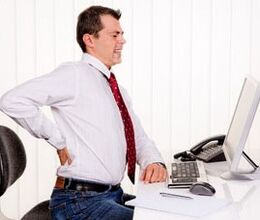
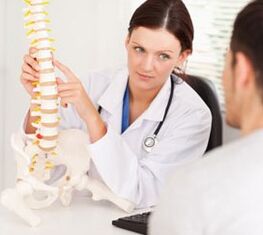
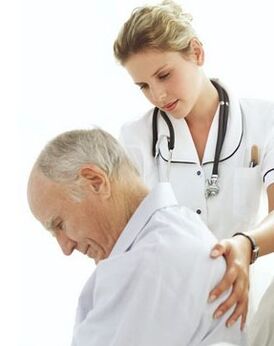
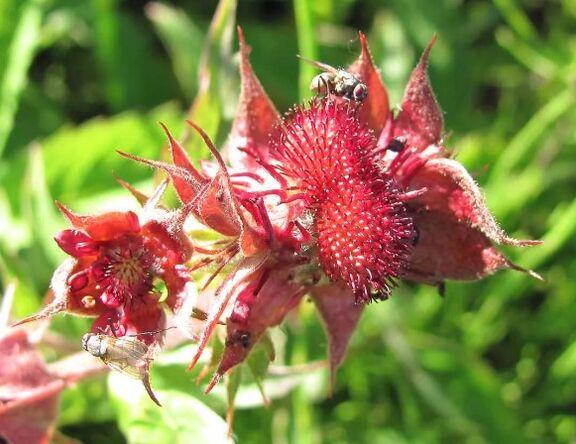
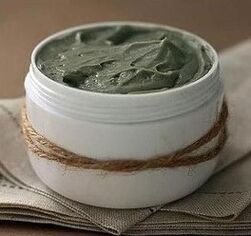
Romania (en)

- România

- Colombia

- Deutschland

- España

- Italia

- Portugal

- Россия

- France

- България

- Belgique

- Shqipëria

- Österreich

- Magyarország

- Η ελλάδα

- საქართველო

- Κύπρος

- Киргизия

- Latvija

- Lietuva

- Lëtzebuerg

- Македонија

- Nederland

- Polska

- Հայաստան

- Беларусь

- Қазақстан

- Moldova

- O'zbekiston respublikasi

- Slovensko

- Slovenija

- Україна

- Hrvatska

- Česká republika

- Die schweiz

- Eesti
